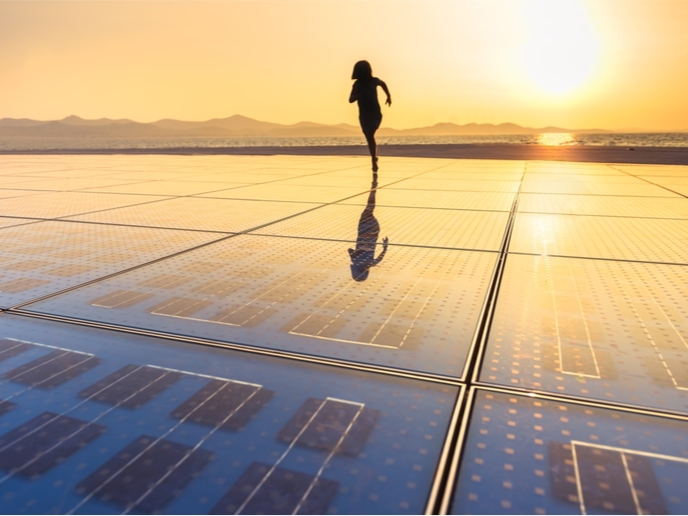A silver lining lights the way to thinner, more efficient solar cells
Thin-film solar cells based on an absorber layer of Cu(In,Ga)Se2, so-called CIGS, offer low weight, low-light efficiency, flexibility, competitive production costs and, importantly, good aesthetics. The EU-funded ARCIGS-M project is working to capitalise on this potential by developing advanced solar cell architectures. The ultimate aim is to further drive down the production costs of CIGS solar modules. Single-step, silver-laced production “The ARCIGS-M project focuses on low-cost thin-film solar cells with very high efficiency suitable for integration in buildings,” project coordinator Prof. Marika Edoff sums up. “We use two types of substrates, either ordinary soda-lime glass or low-cost steel substrates.” A layer of electric insulation is used to coat the steel substrates, enabling single-step production of solar-cell modules without the need for soldering single cells. All thin-film solar cells consist of two contacts: an absorber layer, where sunlight is absorbed, and a transparent front contact. The absorber layer in ARCIGS-M solar cells consists of CIGS, a semiconductor material with a direct band gap. The band gap is a material property and corresponds to the minimum photon energy (from sunlight) required to excite an electron. However, in materials with direct band gap, the absorption has a very high probability and therefore allows for very thin layers of just a few micrometres. ARCIGS-M targets a thickness of only 0.5 µm. The professor notes: “This is not enough for full absorption. Therefore, we have changed our back contact from a layer of molybdenum to a multilayer stack with silver, which provides very high reflectivity, close to 90 %.” Ongoing achievements Among the project’s main achievements, one of the most important is the back-reflector layer, “that we have proven works well together with the CIGS layers,” Prof. Edoff says. To prevent the loss of electrons from the back contact, a layer of a passivating material is added that consists of aluminium oxide perforated with nano-sized openings. “Patterning of the back-contact passivation layer is done in nano-scale with nano-imprint lithography, a method that we show to be scalable for this type of device for the first time,” the coordinator reports. The team has also developed an opto-electric model that is used to provide feedback. Beyond tech developments Notably, the project is making strides outside the lab too. “We have strived to achieve a good gender balance in a field that traditionally is strongly dominated by men,” Prof. Edoff states. The project’s coordinator and co-coordinator are both women, “and for the total project we have managed to get about 40 % female participants in the meetings.” “We hope our project will contribute to new business opportunities for our partners who come from many different complementary fields,” Prof. Edoff comments. These include a utility company, a steel manufacturer and equipment manufacturers. A quote from a 2018 interview sums up the professor’s vision: “Photovoltaics is the present and the future! It is the most democratic way of generating electric power.”
Keywords
ARCIGS-M, solar cell, building, CIGS, thin-film solar cell, silver, absorber layer, photovoltaic, steel substrate, sunlight







